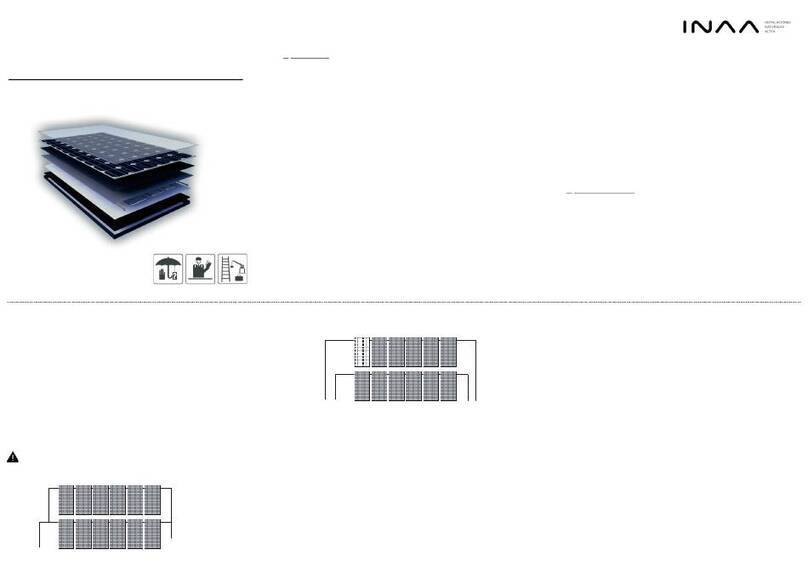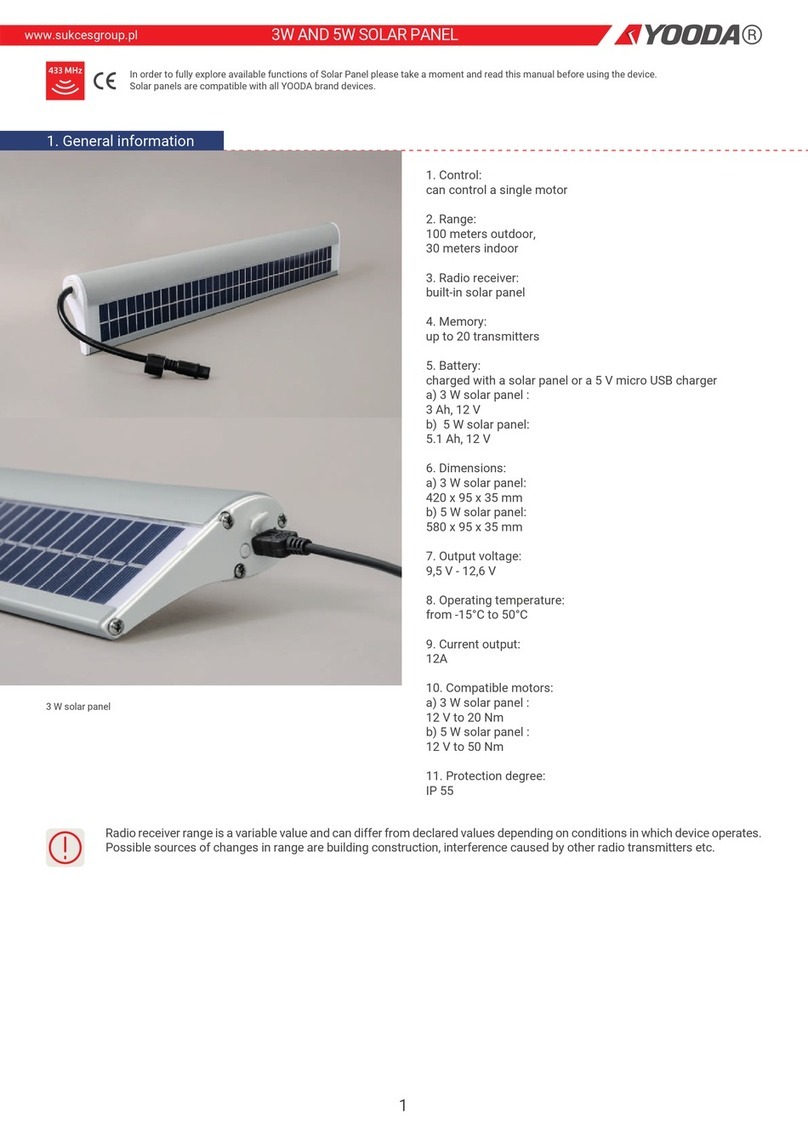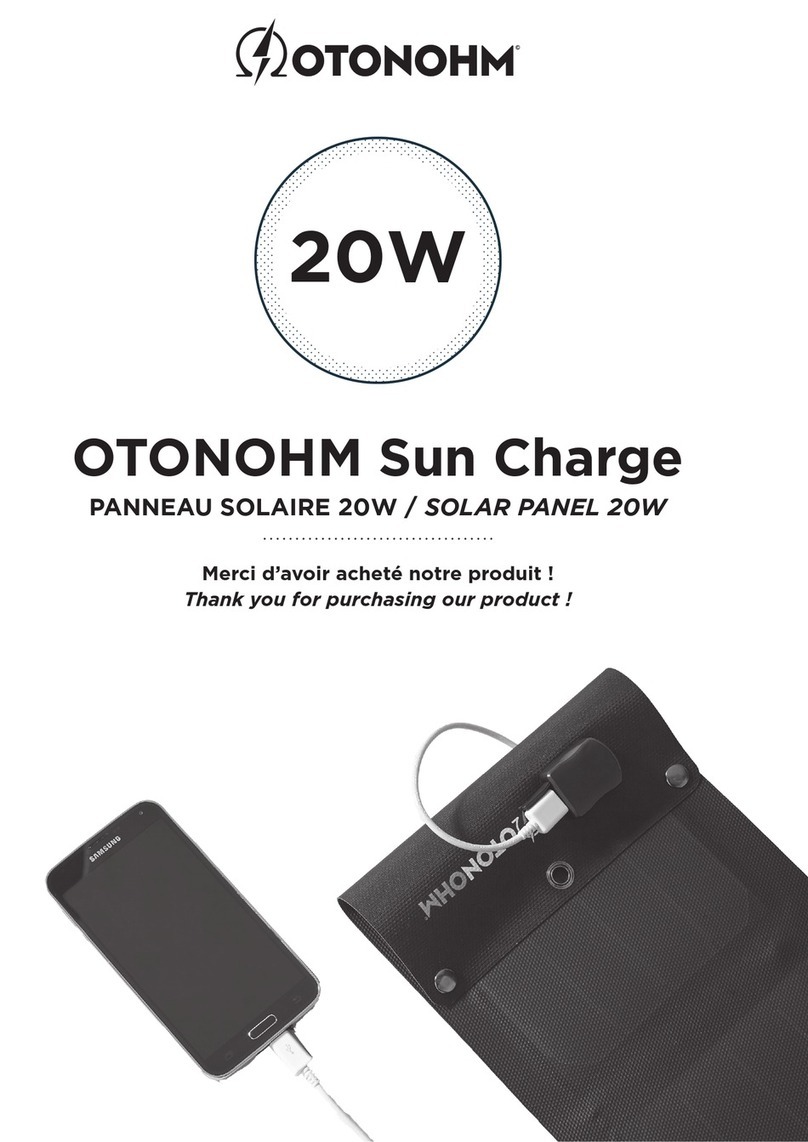EVEBASE GO 120W User manual

USER MANUAL
SOLAR PANEL
GO 120W / GO 200W / GO 350W

IN THE BOX
Solar Panel GO
Connection Cable
(5-meter)
Multiple Connectors
(DC/Anderson/XT-60)
User Manual
SAFETY INSTRUCTIONS
•The installation and connection of this product should be carried out strictly in accordance with the
instructions found in the user manual.
•Use original or certified cables and chargers.
•Only the main body of this product is waterproof. The junction box and controller unit and connection
points should not be exposed to moisture or immersed in water or any other liquids.
•Avoid drops, bumps, friction, and other actions that can easily damage the product. Do not use sharp
objects on the surface of the panel, and do not knock or impact the product.
•Do not apply pressure to the panel or allow the panel to be dropped on any of its corners, sides or faces.
Such actions may result in damage to the solar panel.
•Stop using and contact manufacturer if the product is excessively hot, is emitting odor, deformed or
showing any other abnormalities.
•Store in a cool and dry place, and do not expose to sunlight when stored. Recommended storage
temperature 0°C / +50°C.
•To avoid the risk of injury, do not disassemble or open the product, and do not attempt to repurpose or
modify in any manner.
•This product must not come into contact with highly corrosive substances, or be immersed in corrosive
liquids.
•Do not clean with harmful chemicals or detergents. Clean with a dry and soft towel.
•Avoid excessive vibration, impact, or compression during transport, and keep the product away from
intense sunlight (during storage) and rain.
•Keep this product away from children under 3 years old for safety.
•Please dispose the discarded product properly according to local legal regulations.

GENERAL SET UP INSTRUCTION
1) Unpack the solar panel at the location where it will be set up. Start with unfolding the back flip. Place the
solar panel on solid ground and in the direction of the sun.
2) Unfold the solar panel and use the kick-stands at the back for support.
3) Use the kickstands at the back side of the panels to place the solar panel in the right angle.
Note: To use solar energy most efficiently, try to ensure that the sun shines on the panels at a 90° angle. The
efficiency of the solar panel depends upon light intensity and the tilt angle used. The charging power of the panel
may be affected by a number of factors such as weather conditions, seasonal changes and location.

CHARGE CONTROLLER
MENU button
UP button
DOWN button
1. Short press to switch between different
display interfaces.
Press to increase value.
Press to decrease value.
2. Hold 3 seconds to Enter or Exit interface
settings.
Display Interfaces
Description of how to cycle through the display interfaces and adjust the parameters manually:
1. Short press the MENU button to cycle through the display interfaces.
2. Hold the MENU button for 3 seconds to ENTER a display interface in order to adjust the interface parameter
value manually. The value of the parameter will flash when ready to adjust.
3. While the value is flashing, press the MENU or DOWN button to switch or increase and decrease the value
of the interface parameter.
4. Hold the MENU button for 3 seconds to EXIT a display interface in order to set the adjusted interface
parameter. Note: The automatic memory function of this controller will set the value if this is not done
manually.

Overview of the display interfaces:
Interface 1
Interface 2
Interface 3
Interface 4
Interface 5
Interface 6
Interface 7
Interface 8
Interface 9
Interface 10
Interface 11
Interface 1: Main interface.
Interface 2: Displays the surrounding temperature of the charge controller.
Interface 3: Displays the charge current from the solar panel to the connected battery.
Interface 4: Displays the discharge current from the battery to the connected load. The icon in the middle
shows how much power is left in the battery.
Interface 5: Displays the accumulated charging power from the solar panel to the battery.
Interface 6: Displays the accumulated discharging power from the battery to the load.
Interface 7: Displays the charging cut-off voltage. The solar panel automatically stops charging the battery
when this voltage is reached to prevent damage caused by excessive battery voltage.
Interface 8: Displays the discharge recovery voltage. The battery will automatically stop powering the load
when the voltage is too low. When the battery has returned to a sufficient voltage level, it will
automatically start powering the load again.
Interface 9: Displays the discharge cut-off voltage. The battery will automatically stop powering the load
when the voltage of the load is too low.
Interface 10: Displays the set time for the load output. This can be changed by adjusting the parameters.
Interface 11: Battery selection menu. The correct battery type must be selected before connecting the
battery to the solar panel.

SET UP WITH A PORTABLE POWER STATION
Sun
Solar Panel GO
Power Station
Devices
1. Follow the general setup instruction of the solar panel.
2. Use the 5-meter connection cable and connect this cable to the charging input port of the portable power
station. Multiple cable connectors are included (DC/Anderson/XT-60).
Connection Cable
(5-meter)
Multiple Connectors
(DC/Anderson/XT-60)
Portable Power Station
(Not included)
3. Unzip and open the controller bag. This bag is located at the back side of the solar panel.

4. Connect the 5-meter connection cable to the left DC-output port of the solar charge controller.
Note: To secure a stable current it is recommended to connect the power station to the solar charge controller
by using the 5-meter connection cable. However, it is also possible to connect the 1-meter solar panel cable
directly to the power station. Warning: Do not connect both cables to either one or multiple power stations or
other devices simultaneously to avoid damaging.
DC Output Port 18V
Schedule DC Cable –Solar Charge Controller
5. The solar panel will start recharging the portable power station automatically if the set up is completed.
Note: When the solar panel does not start with recharging the portable power station, then please check if the
cables are connected as per below schedule. If the set up is not as per below schedule, please disconnect all
cables and return to point 2 to restart the setup procedure.
Schedule DC-Connection Cable - Connectors
Portable Power Station

USB-PORT
1. Follow the general setup instruction of the solar panel.
2. Unzip and open the controller bag. This bag is located at the back side of the solar panel.
3. Connect an USB-A cable of the device to the USB-A output port of the solar charge controller. When the
devices are connected, recharging will start automatically. A maximum of two USB-A cables can be connected
to the charge controller.
USB-A Output Port
Schedule USB-A Cabling - Devices
(USB-A cable and devices are not included)

SET UP WITH OTHER BATTERIES
The solar charge controller makes this solar panel able to recharge a range of batteries. In this chapter is described
how to set up the charge controller to recharge other batteries than a portable power station. Read the operation
instruction in this chapter carefully before use.
Warning: Please check if the battery is compatible with the output wattage and output voltage of this solar panel.
The charge controller is only suitable for regulating solar modules. Do not connect other charging sources to the
charge controller.
Operation Instruction
It is possible to connect other types of batteries to the plus and minus poles at the bottom of the controller.
1. Check if the battery is compatible with this charge controller. This charge controller is suitable for the
following 3 types of batteries:
•Lead-acid batteries (12V/24V auto);
•Lithium-ion batteries (3 strings of 11.1V lithium batteries);
•Lithium iron phosphate (LiFePO4) batteries (4 strings of 12.8V).
Warning: This product can not be used for other batteries.
2. Set up the solar panel in a position with sufficient sunlight to power the charge controller.
3. Select the battery type in the charge controller menu according to the following steps:
a. Press 10 times on the MENU button to go to the BATTERY SELECTION MENU.
Battery selection menu
MENU button
b. Hold the MENU button for 3 seconds to enter the BATTERY SELECTION MENU.
BATTERY TYPE INDICATOR (B1/B2/B3) will flash. The
BATTERY TYPE can be selected now.
c. Press the MENU / DOWN button to switch between the different BATTERY TYPES. It is only possible
to switch and select the correct BATTERY TYPE while the BATTERY TYPE INDICATOR (B1/B2/B3) is
flashing.
-Select B1 for a lead-acid battery (12V/24V auto);
-Select B2 for a lithium-ion battery (3 strings of 11.1V lithium batteries);
-Select B3 for a lithium-iron phosphate (LiFePO4) battery (4 strings of 12.8V).
MENU
DOWN

d. After selecting the correct BATTERY TYPE, hold the MENU button for 3 seconds to set the battery
type. Note: The automatic memory function of this controller will set the value automatically if this
is not done manually.
Warning: Make sure the right battery type is selected before connecting the battery. The product and
rechargeable device can get damaged when the wrong battery type has been selected. To adjust this setting in
the charge controller, follow previous steps and make sure that the solar panel is set up in a position with sufficient
sunlight to power the charge controller.
4. Connect the battery cables (not included) to the correct poles (plus/minus) of the charge controller. The
cables should be as short as possible to minimize energy loss.
Charge controller battery poles (plus/minus)
5. Connect the battery cables to the correct poles (plus/minus) of the battery. Follow the instructions of the
battery manufacturer.
6. If applicable, connect the load (external device) to the charge controller. Connect the cables of the load to
the correct poles (plus/minus) of the charge controller.
Charge controller load (external device) poles (plus/minus)
7. 12V devices can be connected to the 12V DC output on the right side of the controller. The 12V DC output
can only be used if a battery is connected to the poles on the bottom of the controller.
12V DC output

TECHNICAL SPECIFICATIONS
Model
EBSP-GO-120
EBSP-GO-200
EBSP-GO-350
Rated Power
120W
200W
350W
Cell Type
Monocrystalline Silicon
Monocrystalline Silicon
Monocrystalline Silicon
Cell Efficiency
22%
22%
22%
Open Circuit Voltage (Voc)
22V
24V
25V
Short Ciruit Current (Isc)
7.2A
12.5A
22A
Voltage Maximum Power (Vmp)
18V
18V
18V
Current Maximum Power (Imp)
6.7A
11A
20A
Operating Temperature
-10°C / +70°C
-10°C / +70°C
-10°C / +70°C
Connector Type
10A Charge Controller
20A Charge Controller
30A Charge Controller
Folded Dimensions
520 x 370 x 75 mm
545 x 560 x 75 mm
545 x 580 x 105 mm
Unfolded Dimensions
520 x 1660 x 25 mm
545 x 2405 x 55 mm
545 x 4055 x 55 mm
Weight
5 kg
8 kg
13 kg
EveBase Tech B.V.
Oostwal 2
1747 EZ
Tuitjenhorn
The Netherlands
www.evebase.com
Designed in NL. Made in PRC.
This manual suits for next models
5
Table of contents
Popular Solar Panel manuals by other brands
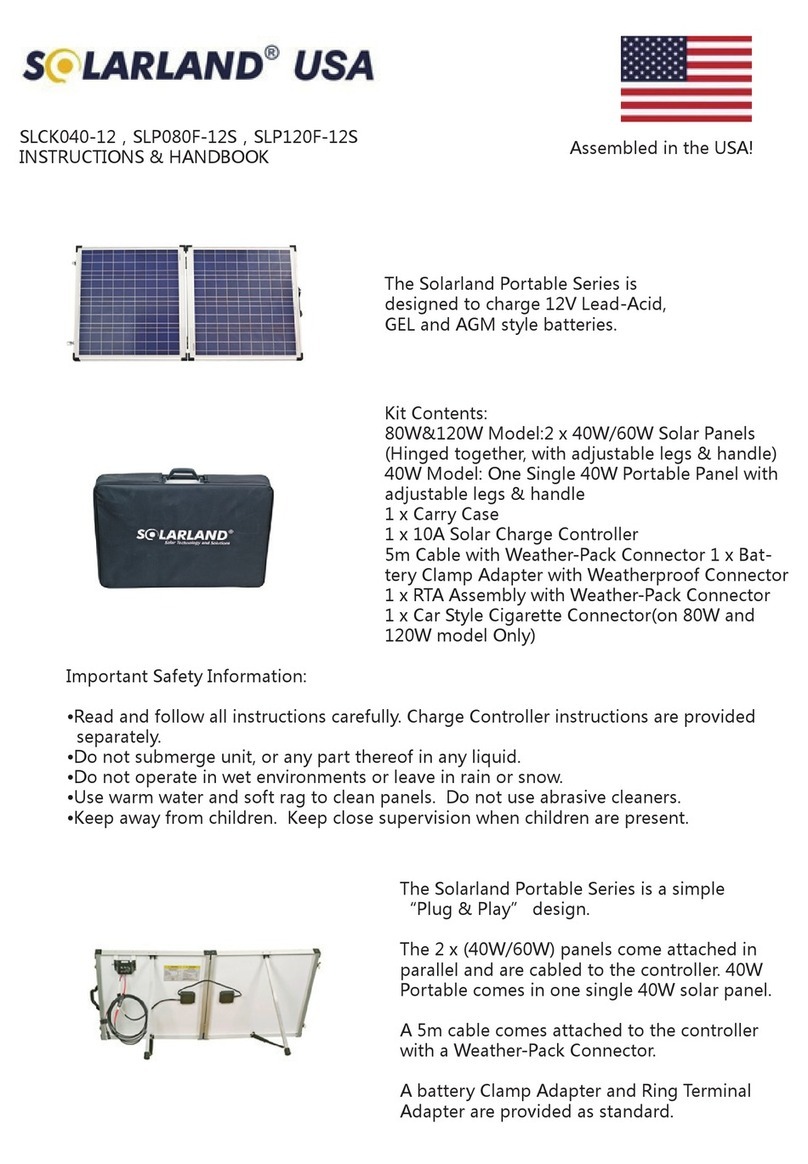
Solarland
Solarland Portable Series Instruction handbook
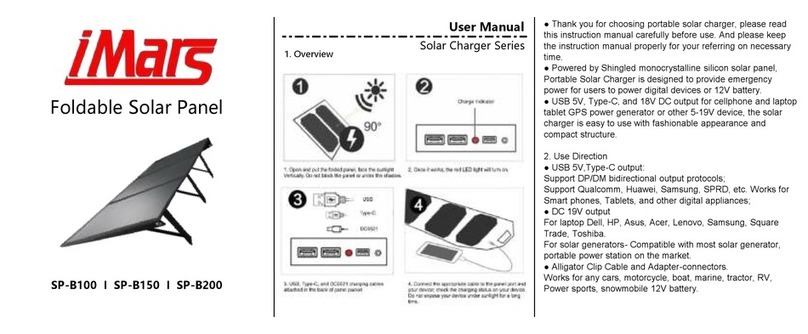
iMars
iMars Solar Charger Series user manual
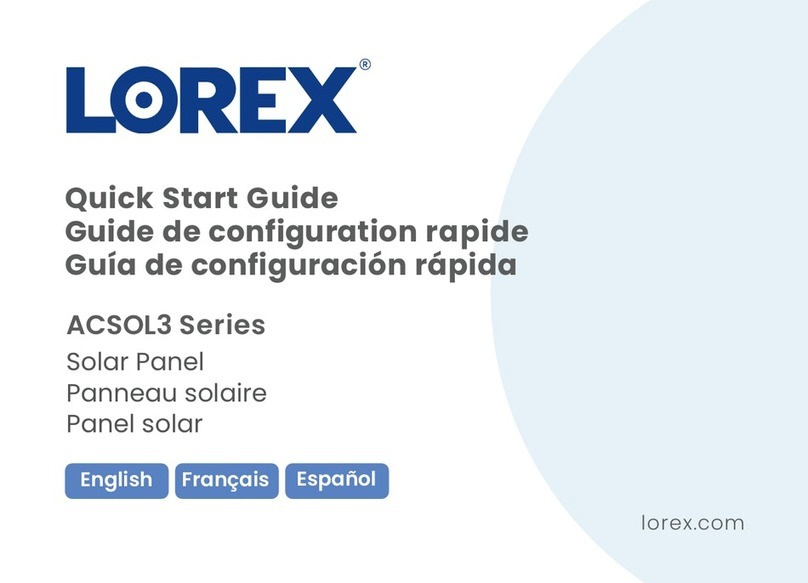
Lorex
Lorex ACSOL3 Series quick start guide
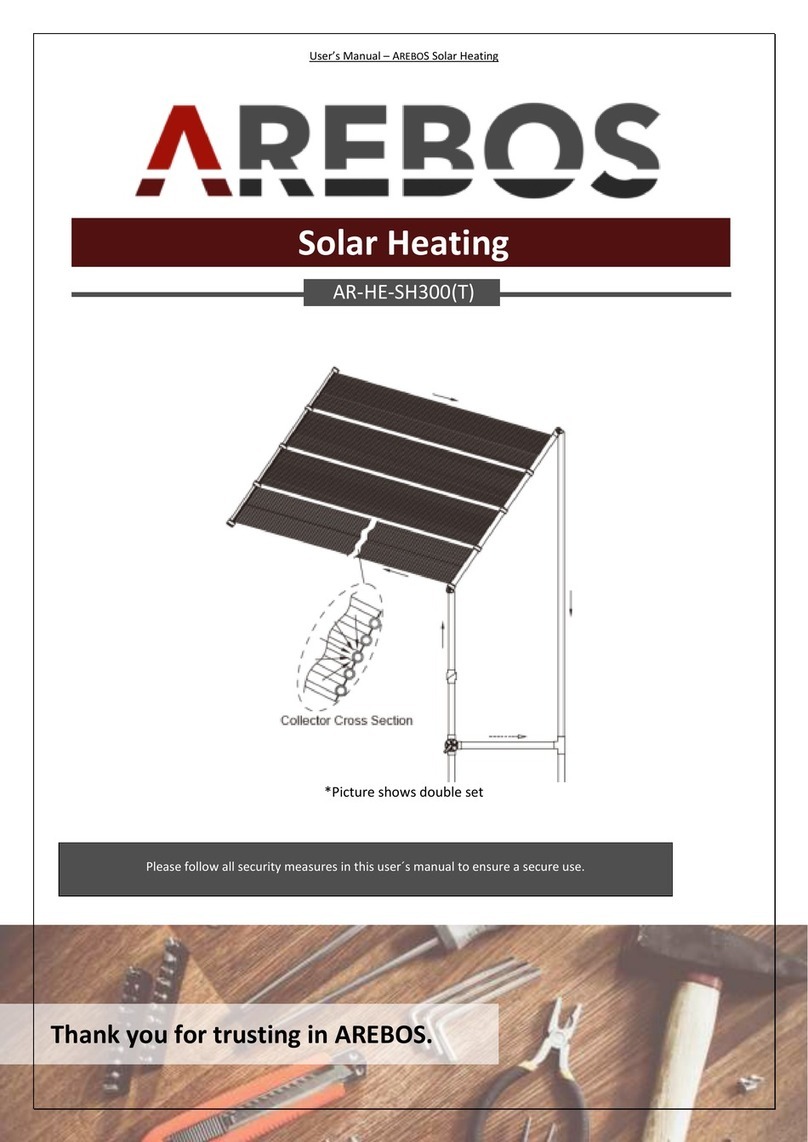
AREBOS
AREBOS AR-HE-SH300 manual

JIANGYIN TITANERGY
JIANGYIN TITANERGY TT-ADJUSTABLE TILT LEGS installation manual
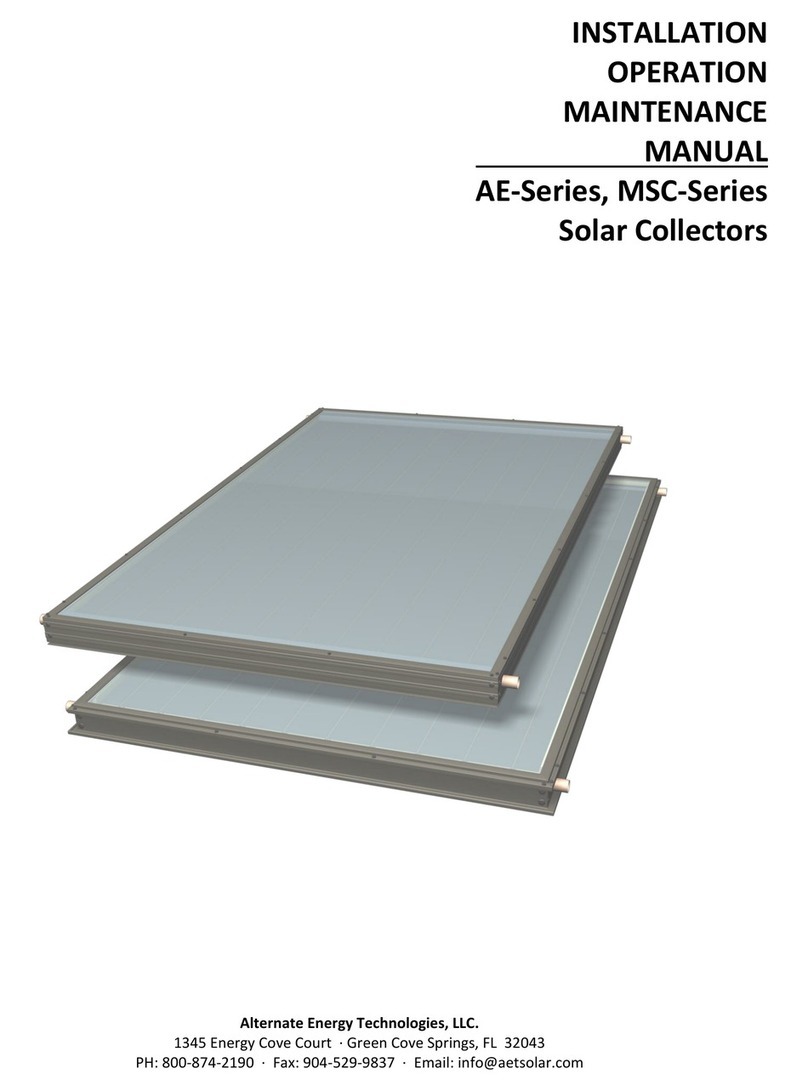
Alternate Energy Technologies
Alternate Energy Technologies AE-Series Installation, operation & maintenance manual
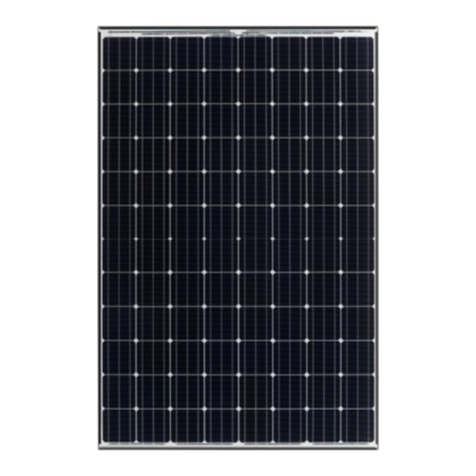
Panasonic
Panasonic HIT VBHNxxxSJ53 series manual
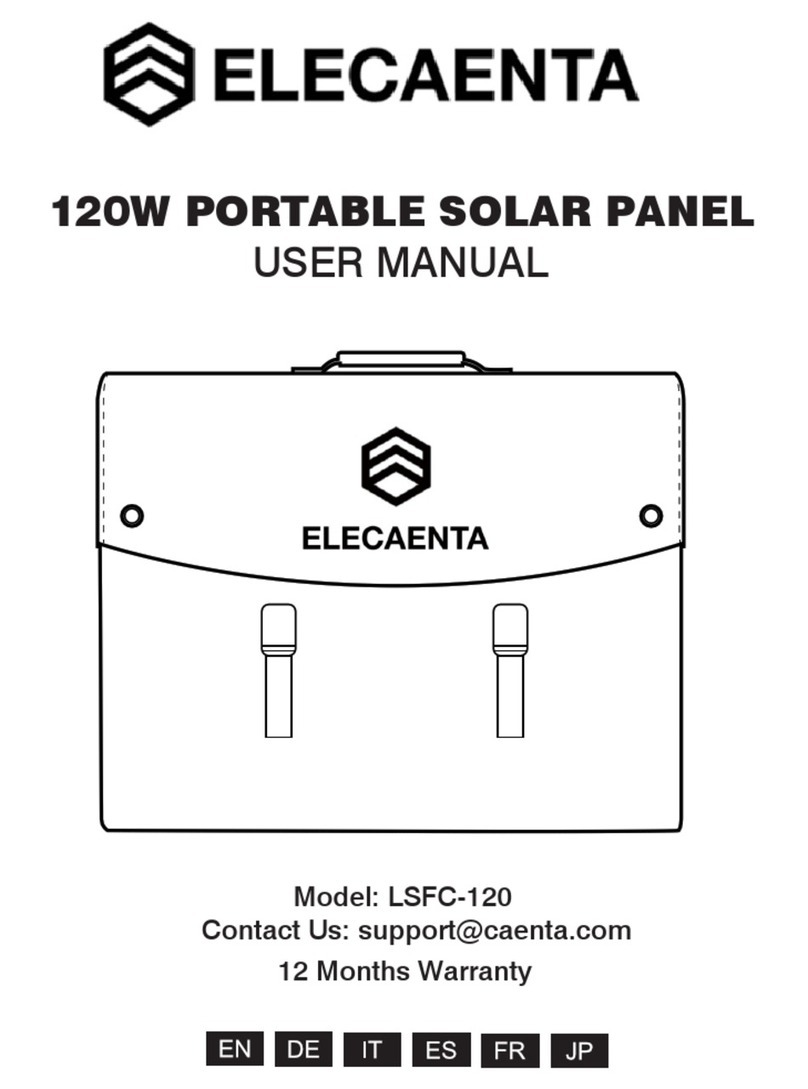
ELECAENTA
ELECAENTA LSFC-120 user manual
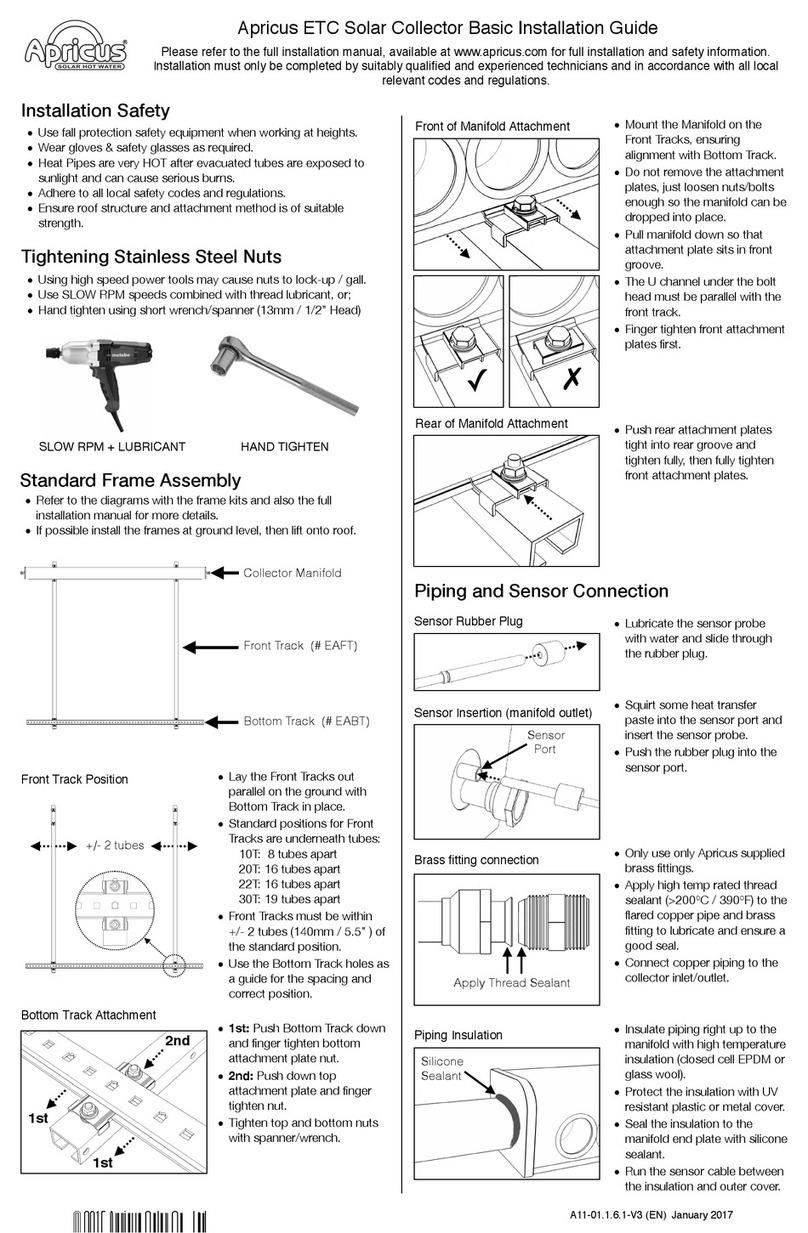
Apricus
Apricus etc Basic Installation Guide
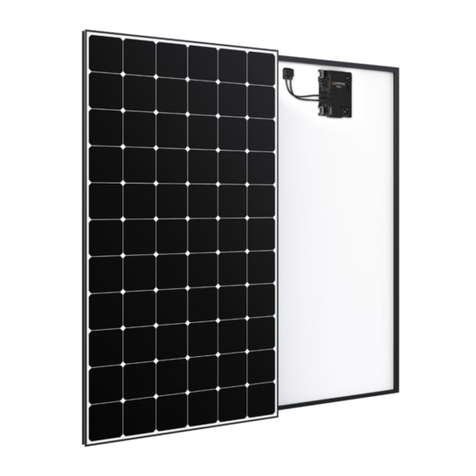
Maxeon
Maxeon SunPower SPR-MAX5-415-E3-AC Safety and installation instructions

Yingli Solar
Yingli Solar YL265P-29b Installation and user manual

INISOL
INISOL NEO 2.1 Installation and service manual

